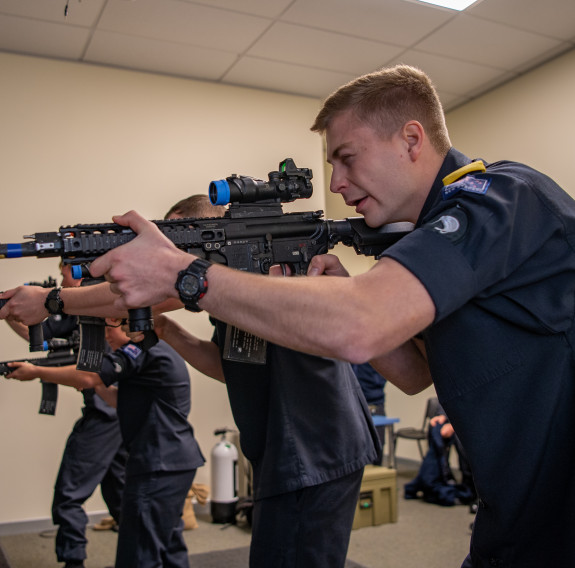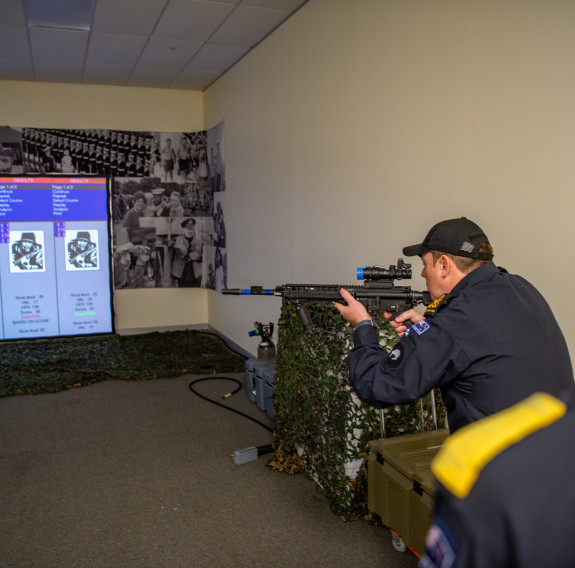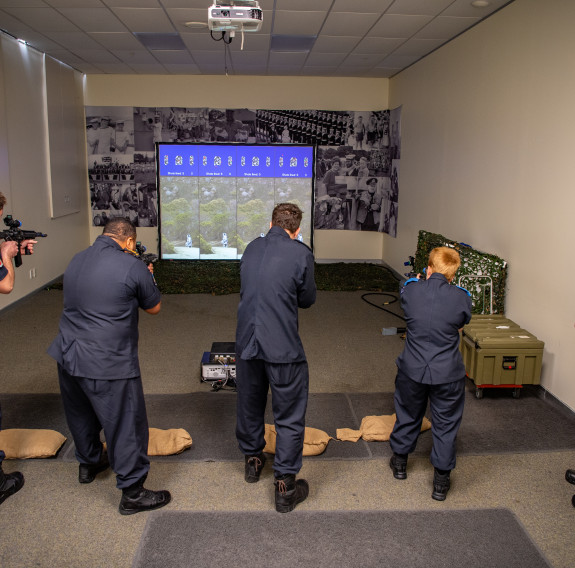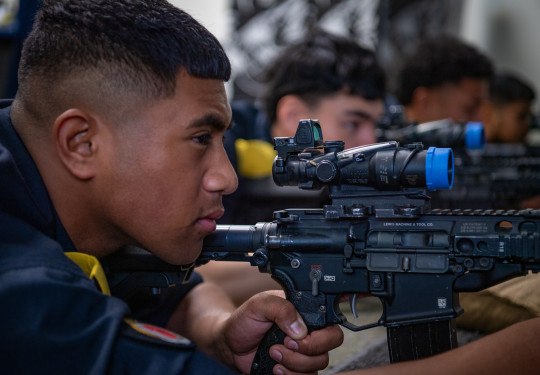Laser simulation tests shoot-don’t shoot scenarios
The Defence Force’s mobile weapons simulator is not only about marksmanship, and it’s not just for ‘front line’ personnel.
30 August, 2023
Live firing at a range tests your accuracy. But the New Zealand Defence Force’s weapons simulator can graphically show you your faults, plus provide scenario-based shoot-or-don’t-shoot environments.
The system, which can be transported between bases, involves personnel ‘firing’ at a computer screen, using MARS-L rifles equipped with lower-power lasers. The screen can project a standard target, with reductions in size to simulate a real target at greater distances, up to 800 metres. The simulator can also run scenarios, involving multiple targets and hazards in an evolving situation.
Midshipman Ben Byrant, Deputy Executive Training Officer at Devonport Naval Base, recently had the opportunity to run teams of naval personnel through the simulator.
He says while it was invaluable training for Seaman Combat Specialists and the Deployable Boarding Team, other personnel such as Defence Technology Agency staff and members of Defence Legal had a turn.
“They all wanted to see the capability and potential of simulation-based shooting and how it could be incorporated to their own unique outputs,” he says.
One big advantage of simulation-based training is information and feedback provided by the computer. “After each shot, it tells you how much your barrel is moving a few seconds beforehand. It tells you how well you are pulling the trigger, how well the buttstock is placed in the shoulder. It gives an excellent visual representation of how precious seconds could be wasted on acquiring a target or spent on getting the perfect shot. When I was using it, I was making full use of this feedback and I was able to apply these things.”

Sailors refresh weapon handling skills on the Mobile Weapons Training System at Devonport Naval Base.

Sailors refresh weapon handling skills on the Mobile Weapons Training System at Devonport Naval Base.

Sailors refresh weapon handling skills on the Mobile Weapons Training System at Devonport Naval Base.
Those attending the Able Seaman Combat Specialist Course were put to work on an instinctive reaction shoot test. “A double-tap to each target as they appear at a range of 50-100 metres. Seems easy enough, then suddenly there’s moving targets and just as they got into the rhythm a Stoppage Drill. This stoppage caught out the majority of personnel that tried the shoot and often led to some less than impressive scores. It did however highlight the importance of perfecting the MARS-L drills and applying marksmanship techniques in a way most users hadn’t experienced before.”
Legal Officer Sub Lieutenant Daniel Bradfield praised the ability of the simulator to put personnel into Law of Armed Conflict situations and watch them make decisions. “It meant we could combine briefs with interactive and teachable scenarios, allowing us to provide our people with a deeper and more practical understanding of when they can or can’t shoot.”
Over a two-week period the simulator can run through more than 100 users and around 20,000 rounds ‘fired’.
